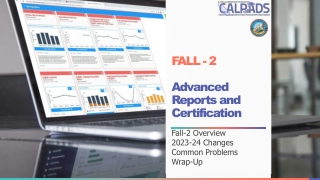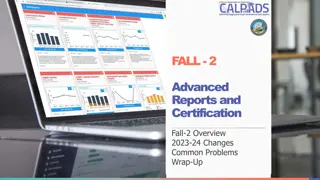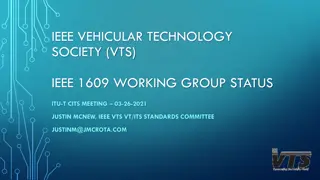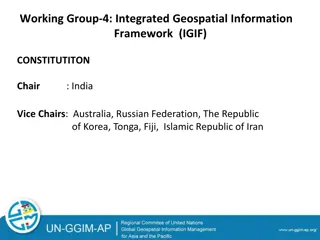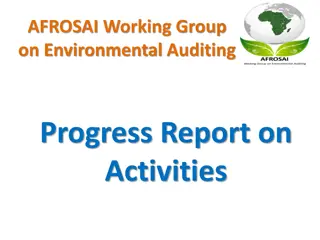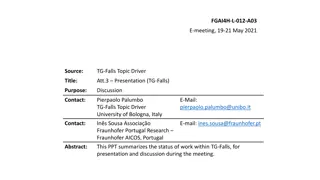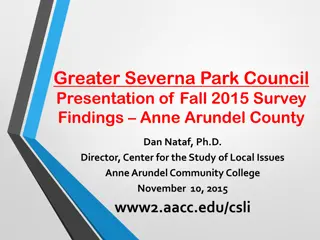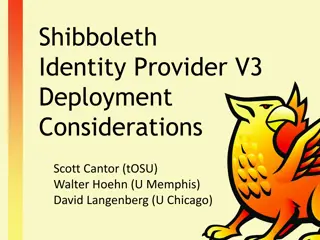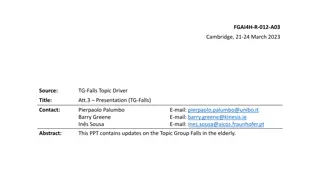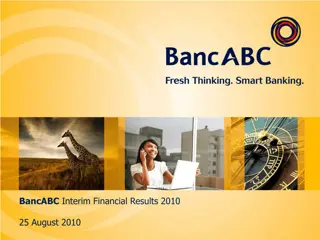Overview of Shibboleth Working Group Activities Fall 2010
The Shibboleth Working Group in Fall 2010, led by Scott Cantor from OSU and Chad LaJoie from Itumi, LLC, showcased a roadmap with committed, planned, and service provider projects. Key highlights include ongoing functions, user support, release maintenance, planned enhancements, and a release candidate for Service Provider version 2.4. The group also focused on improving configuration processes, metadata handling, and security policies. Explore detailed images and descriptions of the group's initiatives in this comprehensive overview.
Download Presentation

Please find below an Image/Link to download the presentation.
The content on the website is provided AS IS for your information and personal use only. It may not be sold, licensed, or shared on other websites without obtaining consent from the author.If you encounter any issues during the download, it is possible that the publisher has removed the file from their server.
You are allowed to download the files provided on this website for personal or commercial use, subject to the condition that they are used lawfully. All files are the property of their respective owners.
The content on the website is provided AS IS for your information and personal use only. It may not be sold, licensed, or shared on other websites without obtaining consent from the author.
E N D
Presentation Transcript
Shibboleth Working Group, Fall 2010 Scott Cantor, OSU Chad LaJoie, Itumi, LLC
Roadmap Committed Work Necessary/expected ongoing functions Funded/staffed projects Planned Work Accepted for prioritization but uncommitted Under Discussion Rejected/Parked Work Lacking in some regard Subject to re-evaluation when circumstances change 3
Committed Project Overhead User Support Supported Release Maintenance SP 2.4 Embedded Discovery Service Metadata Aggregator 4
Planned Expanded introductory documentation V3 IdP / OpenSAML-J V2 Discovery Service V3 TestShib Back-channel Single Logout for the IdP Second Factor Authentication via SMS SP Delegation Enhancement (deferred from 2.4) 5
Service Provider V2.4 Release Candidate now available Minor feature update / bug fix rollup Backward compatible per usual Simplified configuration/defaults Metadata- and discovery-related enhancements Security changes Logging/monitoring changes 7
Configuration https://spaces.internet2.edu/x/fIk9 Radical defaulting of rarely-changed settings Reduction of order strictness Factored security policy rules into separate file Consistent message regarding Apache configuration via Apache commands Shorthand syntax for configuring most SSO/Logout needs 260+ lines to 120 lines 8
Metadata Background reloading of configuration / metadata resources Caching (incl. across restarts) and compression Delays backup overwrite until filtering completes Rational cacheDuration handling Support for extension drafts: http://wiki.oasis-open.org/security/SAML2MetadataUI http://wiki.oasis-open.org/security/SAML2MetadataAlgSupport 9
Discovery Supporting role; provide a usable view of IdP information extracted from metadata to discovery component Supplies JSON data from each metadata source Name/description/logo derived from <mdui:UIInfo> metadata extension New handler aggregates and serves JSON to client Discovery scripts may or may not be in 2.4 release, probably not 10
Security Update/bug fix release of xml-security library Whitelisting/blacklisting of crypto algorithms at application level Conditional support of ECDSA signatures Dynamic selection of algorithms based on metadata extension: <alg:DigestMethod> <alg:SigningMethod> <md:EncryptionMethod> 11
Logging / Monitoring New default logging configuration: Mirrors WARN and higher to a warning log to highlight problems Dedicated debugging log for signature issues Status handler includes local system time and OS- derived platform data 12
DS: Embedded Make discovery easier for SPs to deploy Consumes data from SP 2.4 Added to a page by: adding a <div> adding two <script> Beta release in November https://spaces.internet2.edu/display/SHIB2/DSRoadmap
DS: Centralized Use embedded DS as primary UI Better APIs for filtering and sorting Configuration more aligned with IdP Distributed with configured container
Identity Provider Profile handlers to accommodate more in-flow extensions e.g. terms of use, attribute consent, holder of key support Rework authentication APIs better support for non-browser clients support for SPNEGO, OTP https://spaces.internet2.edu/display/SHIB2/IdPRoadmap
Identity Provider Reduced configuration files Support for <md:EncryptionMethod> HA-Shib like clustering: reduced configuration no process to manage & monitor provides a clustered data store https://spaces.internet2.edu/display/SHIB2/IdPSimplifyConfig
What is SPNEGO Log in to Kerberos/Windows domain No need to log in to websites
Why is it hard? 403 error page if SPNEGO not configured or user not logged in to domain No way to query the browser to determine if SPNEGO is configured Nothing a user can do once they get a 403
How do we fix it? Provide users a choice to log in with SPNEGO Provide a link to a separate app that: checks if a browser is configured provides browser specific config guides sets a permanent cookie if user/browser can t support SPNEGO
Why? Certain use cases want multi-factor authn User certs and time sync tokens are hard and expensive to roll out
How? 1. User logs in 2. SMS with one-time code sent 3. User enters it in the IdP Google recently deployed a similar scheme
Technical Details Requires two log in screens as user has to be identified (by first factor) in order to know to whom to send the SMS Sites deploying will need to provide a way for users to opt-in in to such a method Might need to send a few tokens to users ahead of time in case they don t have cell access


